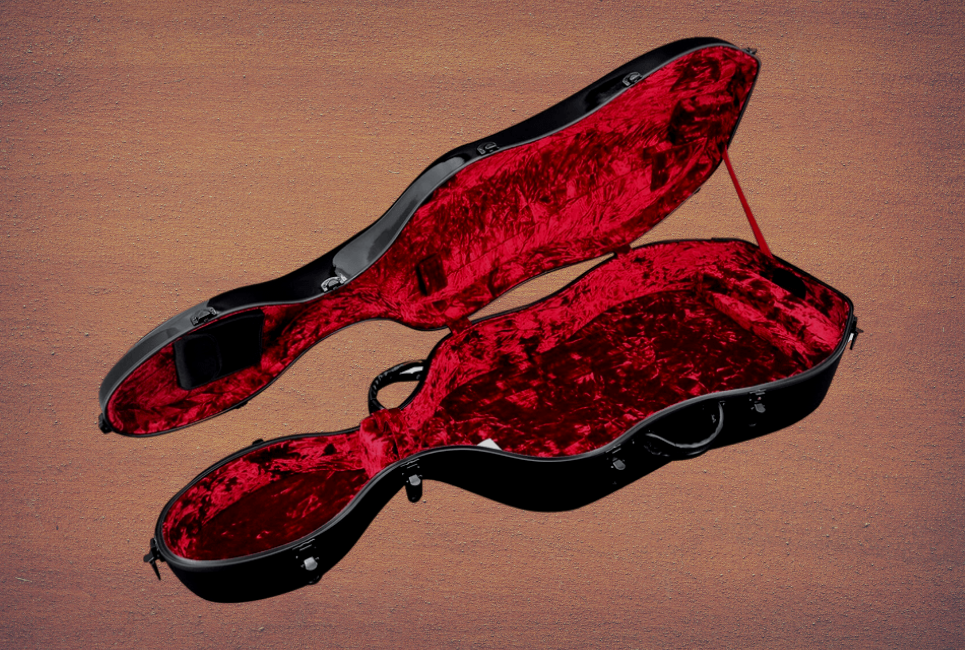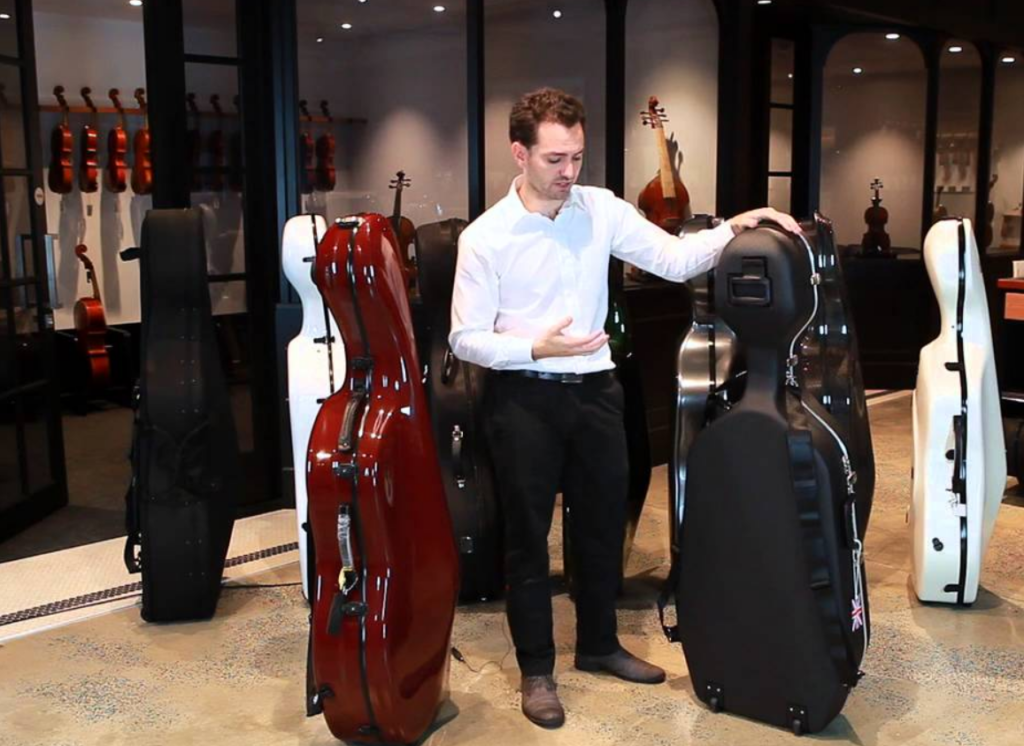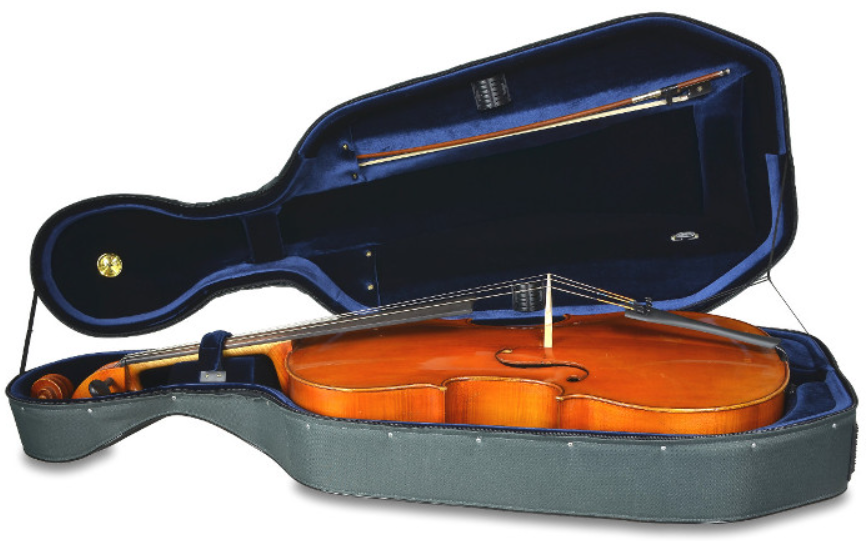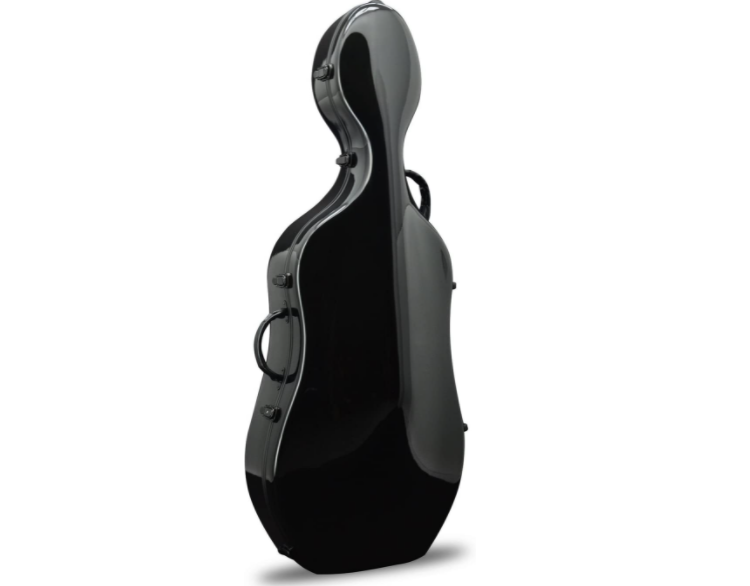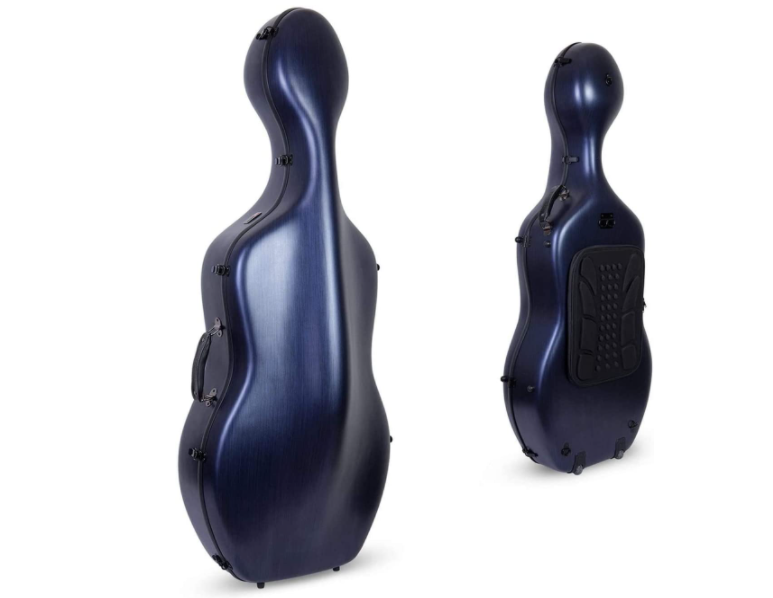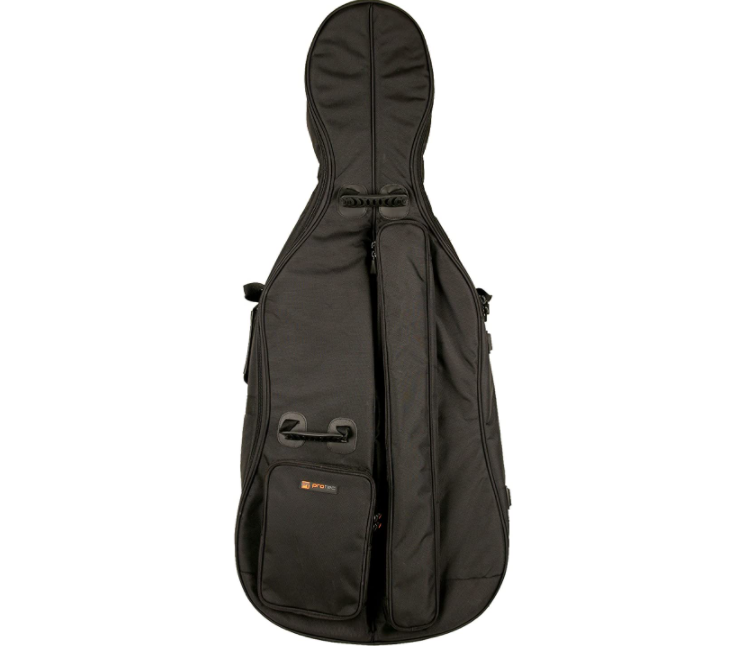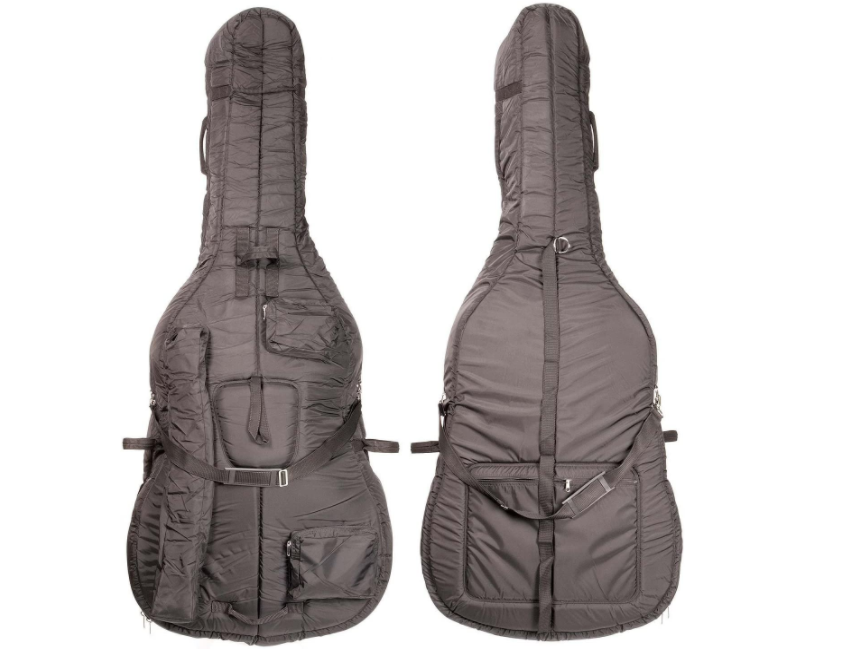- How to Find the Best 5 String Violins - April 19, 2022
- Top Violin Accessories to Consider - April 18, 2022
- Best Left-Handed Violins Guide - April 13, 2022
Summary: Knowing how to find the best cello case starts with knowing what you want the case to do. A case for at-home storage will differ from a travel case for on-the-road performances. So, pick the right type and size for your instrument.
When you find a good cello, you need to protect it. You do that with a cello case. Chances are, at some point, you were going to have to transport your cello, whether that is to and from private lessons or more informal music classes, or international performance. So, you need to learn how to find the best cello case and keep your instrument protected.
Who needs a cello case?
Lots of people. There is a myriad of situations where protection is warranted:
- A musician who wants to protect their cello during transit will benefit from a case.
- An intermediate cellist who wants something to protect their cello when they bring it to and from different concerts.
- A beginner musician who wants to store their cello at home without it getting scratched.
Realistically, anyone who has a cello should consider investing in a cello case. Still, the real question is how to find the right cello case.
@canadiancellist New cello case unboxing!! #cello #cellistsoftiktok #cellistoftheworld #cellist #cellistlife #music #musician #musiciansoftiktok #musiciansontiktok #musicianlife #unboxing #reveal
♬ original sound – Laura Wakeman
Features of Cello Cases and Why They Matter
Knowing how to find the best cello case means understanding the different features and in which situations they matter most.
Material
Firstly, consider the material. You can purchase hard cases or soft cases. One has a hard exterior usually made of composite, and the other is softer made of a soft material. Hard cases also have options for different interior linings that can fit your cello perfectly so that the cello doesn’t move around at all when it is in the case.
These hard cases are much heavier, so you will be responsible for transporting a lot of extra poundage. If you are someone who regularly uses public transportation in the city, be prepared to sweat a little bit more like I did try to race up and down subway steps with an extra 15 lb. of a cello case.
Soft cases are perfectly suitable for most of your everyday endeavors, including going to and from church events, community concerts, music lessons, and so on. You don’t need to spend money on the extra material or weight in these cases. However, once you start traveling, that’s when you need to upgrade to a hard case. In some cases, like flying, you have no other option; the airline demands it.
How you travel will dictate the type of case you want.
| In the car | Driving means you can stick a soft case safely along the back seat or in the passenger seat, or even the trunk of your car, so long as you are careful on the road. |
| On the train | On a train, you will likely have to store your cello with the luggage on a luggage rack or purchase an extra seat for it. In this case, you should get a hard case. |
| In a plane or on a ship | If you travel on cruise ships or airlines, be advised that most major airlines will not let you bring a cello unless it is in a hard case. This is specifically for any cello that you check under the airplane, but if you bring it on board with you, since it won’t fit in the overhead compartment, airlines will require that you purchase an extra ticket so it can sit in the seat next to you. |
Shape and Size
The shape will become an important feature if you invest in a hard case. Hard cases are usually thicker, and their shape might be slightly different if they have the suspension padding built-in. You can find customized cello cases made just for your instrument once you reach a more professional tier of music.
Not sure what size you have, read up on cello sizes, and it might clarify what size you hold in your hands. If not, check out this video on how to measure your cello before you buy a case:
Interior Components
Consider the interior where you can find things like foam injection suspension that cradles your cello so that it doesn’t move or soft velvet lining. Just remember that the less your instrument moves when it’s in the case, the less damage it will sustain during particularly turbulent transportation.
Beyond that, some people want interior components that have a pocket for sheet music and a protective storage unit or built-in suspension area for the cello bow. You will find many options when it comes to interior storage components, like built-in pockets to store your rosin, your bow, your music, extra strings, and more. All of these, of course, comes down to personal preference.
Exterior Components
Exterior components are going to matter a little bit more.
For example: If you live in Scottsdale, Arizona and you transport your instrument regularly, you need an instrument case that is perfectly sealed and has humidity protectors (called hygrometers) on the inside so that you can go from the air-conditioned interior of your home to the hot weather outside, and back without it causing temperature fluctuations for your cello.
Likewise, if you live in Seattle Washington; a weather proofing exterior is going to be much more important than a humidity detector. A hard-shell case that has a tight weatherproof seal will ensure incliment weather won’t damage your cello.
So, if you decide on a hard-shell non-suspension case because you are an intermediate cellist and you perform a lot with community groups during Christmas the most important features will be, in order:
- Hard case
- Exterior seals and weather-appropriate features
- Size
- Interior components
How to pack your cello case
Once you have a case, you don’t just need to use it for travel. I use my case to store my instrument safely when I am not practicing. I assure you; it will save you hours of dusting and wiping down your instrument if you invest in a good case.
That said, you should also learn how to pack your instrument properly. When I started playing, I definitely thought that I could just shove it in (nicely, of course), but that it didn’t really matter what steps I took in the process. I was tired after a long practice and just excited to finally have a case. I was so tired, in fact, that I didn’t understand why the scroll wouldn’t fit. It took me about five minutes to realize the endpin rod was extended, so it kept getting caught at the opposite end of the case. Yikes.
So, learn from my mistakes.
- Adjust your bow for storage and place it out of the way
- Put your cello on your left side to adjust the endpin rod
- Then place it into the case
Here is a video on the dos and don’ts of packing:
Cleaning Your Case
If you are like me, then you probably (accidentally) scrap your carbon fiber cello case against walls, doors, corners on the subway, doorjambs in a thin backstage area, and once or twice on your dog.
So, it is natural that it should pick up some paint or dirt. The dirt, when it dries, can be wiped off easily. The paint and other marks take a bit more elbow grease, but they, too, will come off easily. If you have a carbon fiber hard case, then a scrub brush with some soapy dishwater is a perfect way to clean your case.
Once upon a time, I had a soft case for music classes. We also had pets. It took no time at all for that case to serve as a magnet for pet hair and dust. Thankfully, you can clear soft cases too. For hair and dust, I would recommend starting with a lint roller. It is a type of fabric, so treat it as you would your clothes in this case.
A lint roller will snag the thicker hair and dust, leaving smaller spills or spots that you can clean in the same way as a hard case: dish soap water, a rag, and some elbow grease. Rub the area and rinse it well, soaking up the excess water with a dry towel as you finish.
What are the best cello cases?
There are different manufacturers out there. I started with a soft case, and I can’t even tell you the manufacturer’s name because it was so long ago. Still, it was something a music teacher recommended, and it did the trick.
Now, I have transitioned to a hard case, but that’s primarily because my pets like to knock things over, jump and climb on furniture. They have yet to learn that my cello is not a piece of furniture. The case at least means that the hard-shell exterior gets scratched instead of my instrument. I started with a carbon composite hard case, as mentioned, and it was very heavy.
Since I’m older, I have turned to a fiberglass case which is more expensive but much lighter and helps alleviate a lot of back pain. So, it all comes down to your personal preferences and needs.
I recommend these cases based on their reliability and longevity. These each has different features, but they will meet your basic cello needs by keeping your instrument safe and covered.
I use the Crossrock Fiberglass Cello 4/4 Full-Size Hardshell Case. This case has a hard exterior made of fiberglass, so it is not as heavy as carbon composite cases. It also comes with a head strap and neck strap inside so you can secure your cello.
Pros
- There are padded backpack straps so you can carry your case like a backpack, but it also has wheels and a luggage handle so you can roll it around an airport with ease.
- Inside, you get pockets to hold all of your accessories. In contrast, on the outside, you get 8 latches that guarantee waterproofing and security.
Cons
- The hard-shell case is more expensive.
The Crossrock Poly Carbon Composite is from the same company that I use, but this one is a harder material. It is on the expensive side, but it will keep your cello safe and sound no matter who much it gets bumped.
Pros
- It has a suspension design inside with a velvet lining.
- The shoulder straps are on one side of the case with a special rubber “massage” mat that protects you while wearing it like a backpack.
Cons
- This is meant for professionals and will be a bit on the pricy side for students.
Protec Gig Bag is meant as a middle-of-the-road between a cheaper soft bag and a hard shell. It features a Nylex lining, so you get some level of support beyond just fabric. There are also built-in organizers for your accessories.
Pros
- It has weather-resistant nylon material for the outside.
- There are multiple handles, so you can pick it up in a variety of ways.
Cons
- Because it is soft, it will flop around when your cello isn’t in it, which can be difficult when you are trying to put your instrument away.
Another soft bag option is the Bobelock 3/4 Soft Bag. This is perfect for beginners, children, or adults because it has an extra inch of padded foam on the inside, so it’s not just your cello and then a thin layer of material. This is especially great for children who need to make sure they have everything for their lessons properly stored in one place (the bag) and adults who make short trips or have weekend performances that require they have all of their materials, likewise, in one place.
Pros
- It has an inch of padded foam inside.
- It is also overflowing with pockets inside and out, so it holds everything you need.
Cons
- The softshell won’t work on airplanes.
FAQ
Answer: This depends entirely on your situation. Yes, a soft case protects your cello from minor scratches and gives you somewhere to put it when you aren’t using it so that it doesn’t collect dust. A hard case will protect it against severe injuries, especially if you load it in and out of the car often or travel.
Obviously, if you have a small child or younger member of your family who is taking cello lessons, the instrument will be loaded regularly into the car. That doesn’t mean you have to spend hundreds of dollars you don’t necessarily have on a hard case. Just make sure that your child is aware of their surroundings and they are careful with the soft bag.
If you are a professional or more intermediate cellist, you should absolutely invest in a hard case. A hard case will offer significantly more protection against injuries. Since your instrument is an investment, your hard case will protect that investment.
Answer: This depends on whether you get a hard case or a soft case. Soft cases are made of softer fabrics, well hard cases can be made of carbon fiber or carbon composite. The inside of a hard case also differs. You can invest in a suspension or non-suspension interior.
As the name suggests, a suspension interior literally suspends your instrument in different materials akin to foam so that it never collides with the sides of the case. Think of it like the way your brain is protected in your skull. A non-suspension case will be the more affordable choice. Still, it also means that if your instrument case goes flying, your cello will collide with the sides of the composite.
Answer: Consider your budget. Everyone will always recommend the best cello case for optimum protection. There are wonderful brands upwards of $600 that have a hard exterior shell with suspension inside. This is great for professionals who travel regularly and need to make sure that turbulence on an airplane doesn’t damage their instrument before a big show.
Adults who just started cello lessons and keep their instrument at home or at music practice primarily can get away with a non-suspension hard case.
As long as there aren’t children or pets in the house who could knock the case over from time to time. And of course, children who are taking lessons for the first time might be more prone to knocking their cello bag against walls as they totter down the school hallways. Still, parents can certainly get away with a soft-shell case and use it as an important stepping-stone for teaching their children about responsibility and protecting their instrument.
Looking for more interesting readings? Check out:
- Cello Sizes Explained: Find The Perfect Size For You!
- Double Bass vs Cello Explained: What’s The Difference?
- How to Find the Best Cello: All You Need to Consider!

